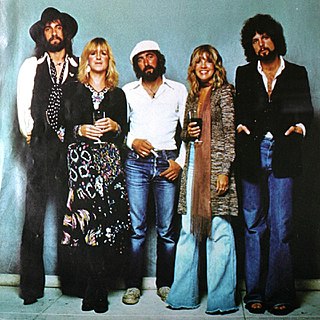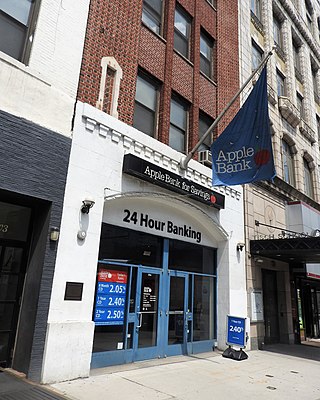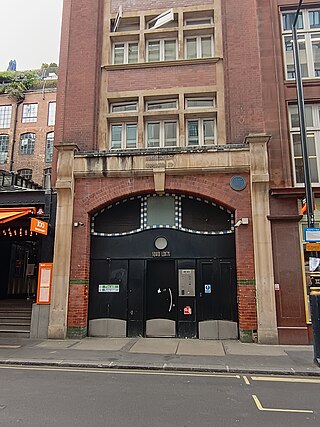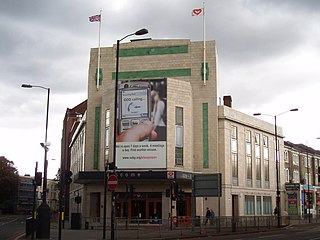Related Research Articles

Fleetwood Mac are a British-American rock band formed in London in 1967 by guitarist and singer Peter Green. Green named the band by combining the surnames of drummer Mick Fleetwood and bassist John McVie, who have remained with the band throughout its many lineup changes. Fleetwood Mac have sold more than 120 million records worldwide, making them one of the world's best-selling bands.

A Deadhead or Dead head is a fan of the American rock band the Grateful Dead. The Deadhead subculture originated in the 1970s, when a number of fans began traveling to see the Grateful Dead in as many shows or festival venues as they could. As more people began attending live performances and festivals, a community developed. The Deadhead community has since gone on to create slang and idioms unique to them.

The Fillmore is a historic music venue in San Francisco, California.

Red Rocks Amphitheatre is an open-air amphitheater in the western United States near Morrison, Colorado, approximately ten miles (16 km) southwest of Denver. It is owned and operated by the city of Denver. In addition to several other large sandstone formations nearby, the venue is best recognized by its two massive monoliths, named "Ship Rock" and "Creation Rock", as well as the smaller "Stage Rock", which together flank its 9,525 capacity seating area and naturally form the amphitheater. While the venue is primarily known for hosting concerts and music festivals, other events of various types and sizes are held throughout the year.

John F. Kennedy Stadium, formerly Philadelphia Municipal Stadium and Sesquicentennial Stadium, was an open-air stadium in Philadelphia that stood from 1926 to 1992. The South Philadelphia stadium was on the east side of the far southern end of Broad Street at a location now part of the South Philadelphia Sports Complex. Designed by the architectural firm of Simon & Simon in a classic 1920s style with a horseshoe seating design that surrounded a track and football field, at its peak the facility seated in excess of 102,000 people. Bleachers were later added at the open (North) end. The shape of the stadium resembles the horseshoe configuration of Harvard Stadium built in 1903.

The Spectrum was an indoor arena in Philadelphia, Pennsylvania. The arena opened in September 1967 as part of what is now known as the South Philadelphia Sports Complex. After several expansions of its seating capacity, it accommodated 18,168 for basketball and 17,380 for ice hockey, arena football, indoor soccer, and box lacrosse.

Chicago Coliseum was the name applied to three large indoor arenas, which stood at various times in Chicago, Illinois, from the 1860s to 1982. They served as venues for large national conventions, exhibition halls, sports events, and entertainment.

The Capital Centre was an indoor arena in the eastern United States, located in Landover, Maryland, a suburb east of Washington, D.C. The seating capacity was 18,756 for basketball and 18,130 for hockey.

The Fillmore East was rock promoter Bill Graham's rock venue on Second Avenue near East 6th Street on the Lower East Side section of Manhattan, now called the East Village, in New York City. The venue was open from March 8, 1968, to June 27, 1971, and featured some of the biggest acts in rock music of that time. The Fillmore East was a companion to Graham's Fillmore Auditorium, and its successor, the Fillmore West, in San Francisco.

Winterland Ballroom was an ice skating rink and music venue in San Francisco, California, United States. The arena was located at the corner of Post Street and Steiner Street. It was converted for exclusive use as a music venue in 1971 by concert promoter Bill Graham and became a popular performance location for many rock acts. Graham later formed a merchandising company called Winterland Productions, which sold concert shirts, memorabilia, and official sports team merchandise.

Folsom Field is an outdoor college football stadium located on the campus of the University of Colorado in Boulder, Colorado. It is the home field of the Colorado Buffaloes of the Big 12 Conference.

The Marquee Club was a music venue in London, England, which opened in 1958 with a range of jazz and skiffle acts. It was a small and relatively cheap club, in the heart of London's West End.

Pine Knob Music Theatre is an outdoor amphitheater located in Independence Township, Michigan, approximately 40 miles (64 km) northwest of Detroit. Built by the Nederlander Organization in the early 1970s, it is known as "Pine Knob Music Theatre" due to its proximity to the nearby Pine Knob ski area and golf course.
Day on the Green was a recurring concert in Oakland, California, presented by promoter Bill Graham and his company Bill Graham Presents. Held at the Oakland–Alameda County Coliseum, these events began in 1973 and continued into the early 1990s. The last Day on the Green overseen by Graham took place the same month as his death in a helicopter crash in 1991. There was a series of Day on the Green shows the following year in the wake of Graham's death and there were other shows in 1994-97 at the Oakland Coliseum Stadium - namely U2, Pink Floyd, and the Rolling Stones.
The Chick Evans Field House is a 6,000-seat multi-purpose arena in DeKalb, Illinois, US. The arena opened in 1956 and was home to the Northern Illinois University Huskies basketball team prior to the 2002 opening of the Convocation Center. It now serves as the indoor venue for the Huskies' men's and women's tennis teams. It was named in honor of longtime NIU athletic director George "Chick" Evans.

The Hollywood Sportatorium was an indoor arena in Pembroke Pines, Florida, located at 17171 Pines Boulevard. The Sportatorium was 26 miles (42 km) from downtown Miami and 23 miles (37 km) from downtown Fort Lauderdale. During its 18 years of operation, it was the only venue of its kind in heavily populated South Florida.
The Capitol Theatre was an entertainment venue located at the intersection of Monroe Street and Central Avenue in Passaic, New Jersey. Opened in 1921 as a vaudeville house, the Capitol later served as a movie theater, and then as a venue for rock concerts.

The Boston Tea Party was a concert venue located first at 53 Berkeley Street in the South End neighborhood of Boston, Massachusetts, and later relocated to 15 Lansdowne Street in the former site of competitor, the Ark, in Boston's Kenmore Square neighborhood, across the street from Fenway Park. It operated from 1967 to the end of 1970. Its closing was due in part to the increasing cost of hiring bands who were playing more and more at large outdoor festivals and arena rock concerts.

Memorial Hall, or Soldiers and Sailors Memorial Building, is a multi-purpose auditorium located in Kansas City, Kansas. The 3,500-seat auditorium, which has a permanent stage, is used for public assemblies, concerts and sporting events. It was listed on the National Register of Historic Places in 1985. It was designed by architects Rose & Peterson in Georgian style.

The Rainbow Theatre, originally known as the Finsbury Park Astoria, then the Finsbury Park Paramount Astoria, and then the Finsbury Park Odeon, is a Grade II*-listed building in Finsbury Park, London. The theatre was built in 1930 as an "atmospheric cinema", to house entertainment extravaganzas which included a film show. It later became an ordinary cinema, then a music venue, as which it is best known, and then an occasional unlicensed boxing venue. Today, the building is used by the Universal Church of the Kingdom of God, an Evangelical church.
References
- ↑ "The Warehouse Concerts List-Documenting Warehouse concerts and memorabilia". blackstrat.net. Retrieved 2015-06-01.
- ↑ Kolb, Carolyn (March 2013). "New Orleans Impresarios Put on the Shows". New Orleans magazine. Retrieved 2016-05-19.
- ↑ "Remembering The Warehouse | News | Gambit New Orleans News and Entertainment". www.bestofneworleans.com. Archived from the original on 2011-09-08.